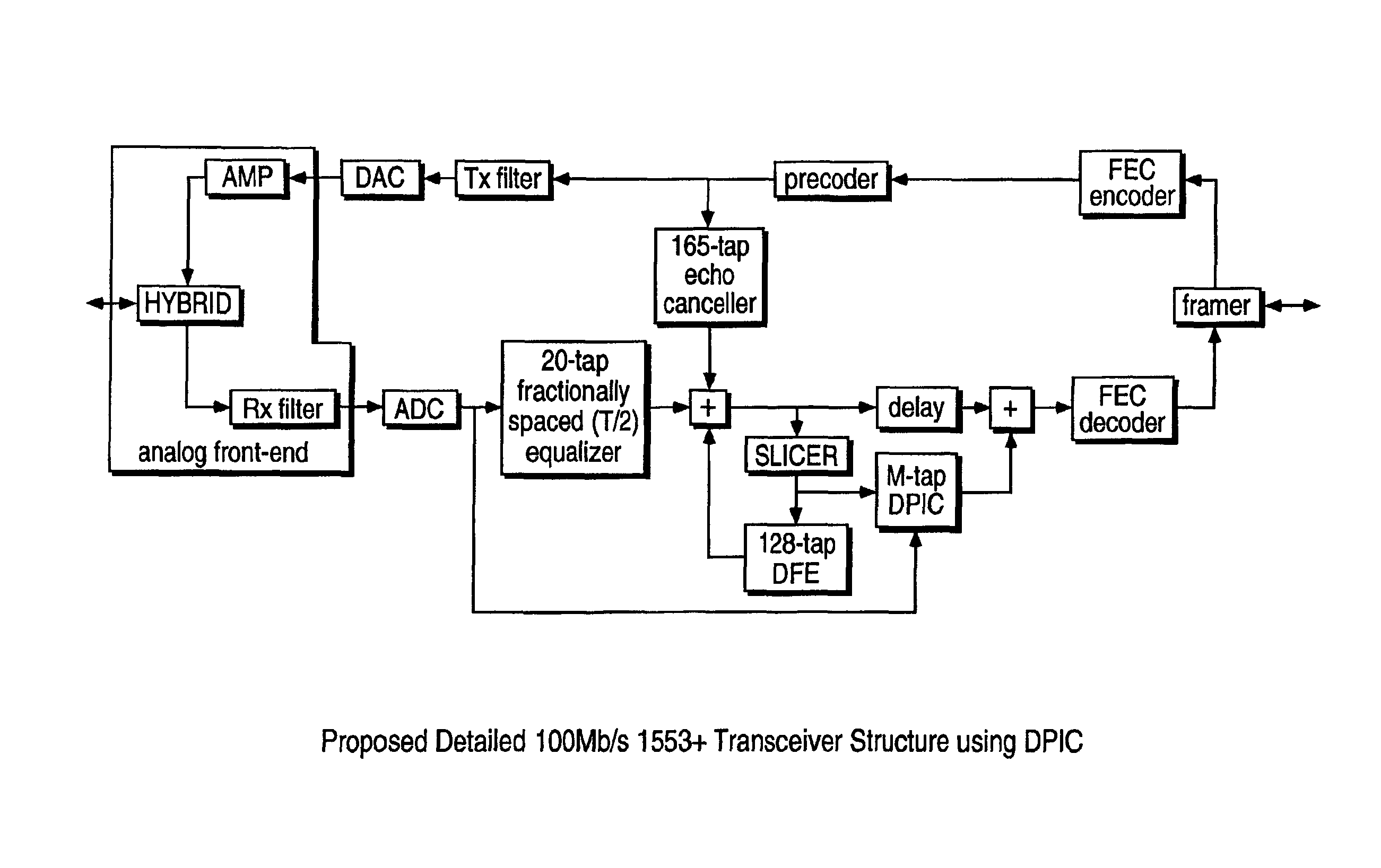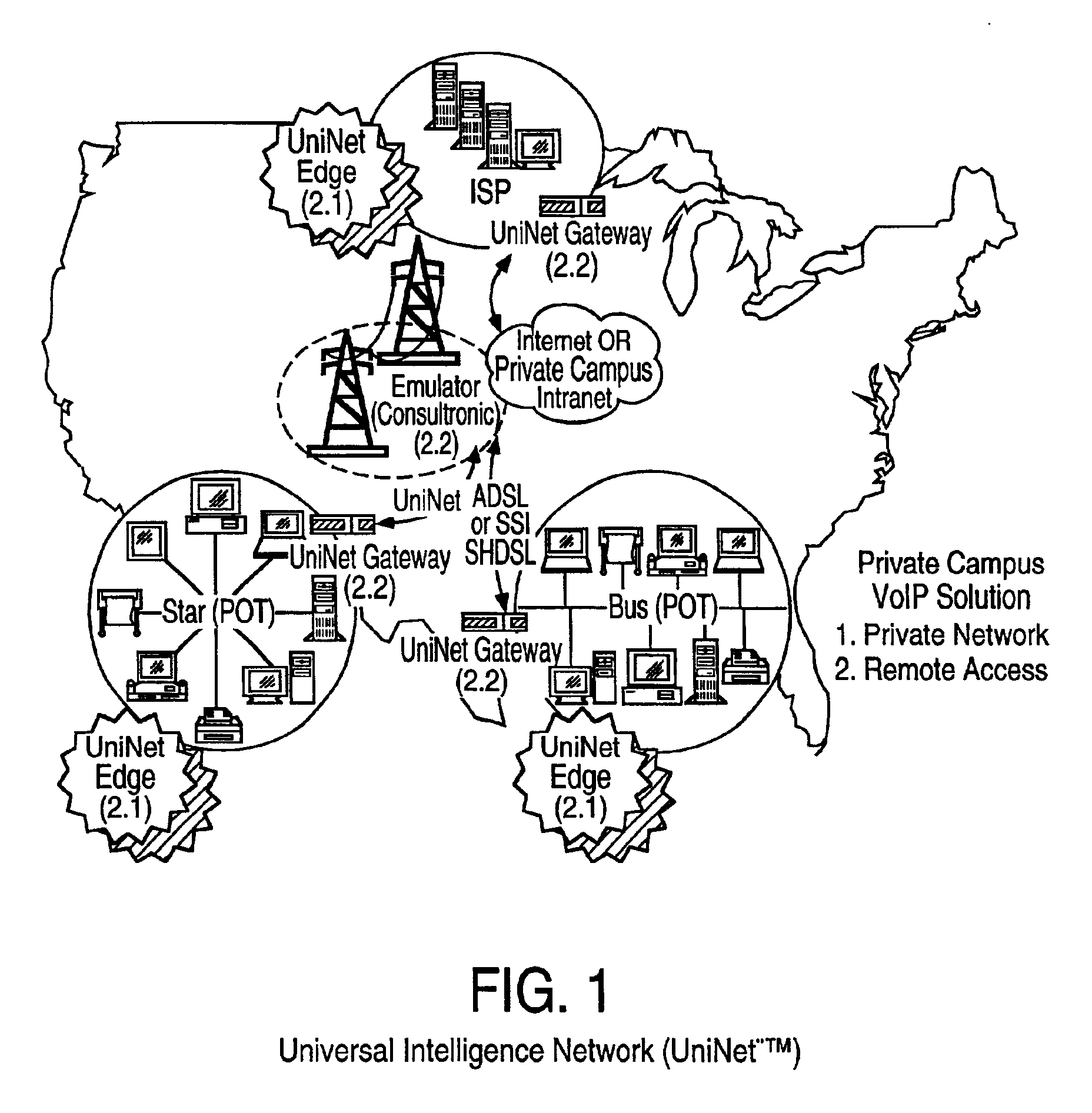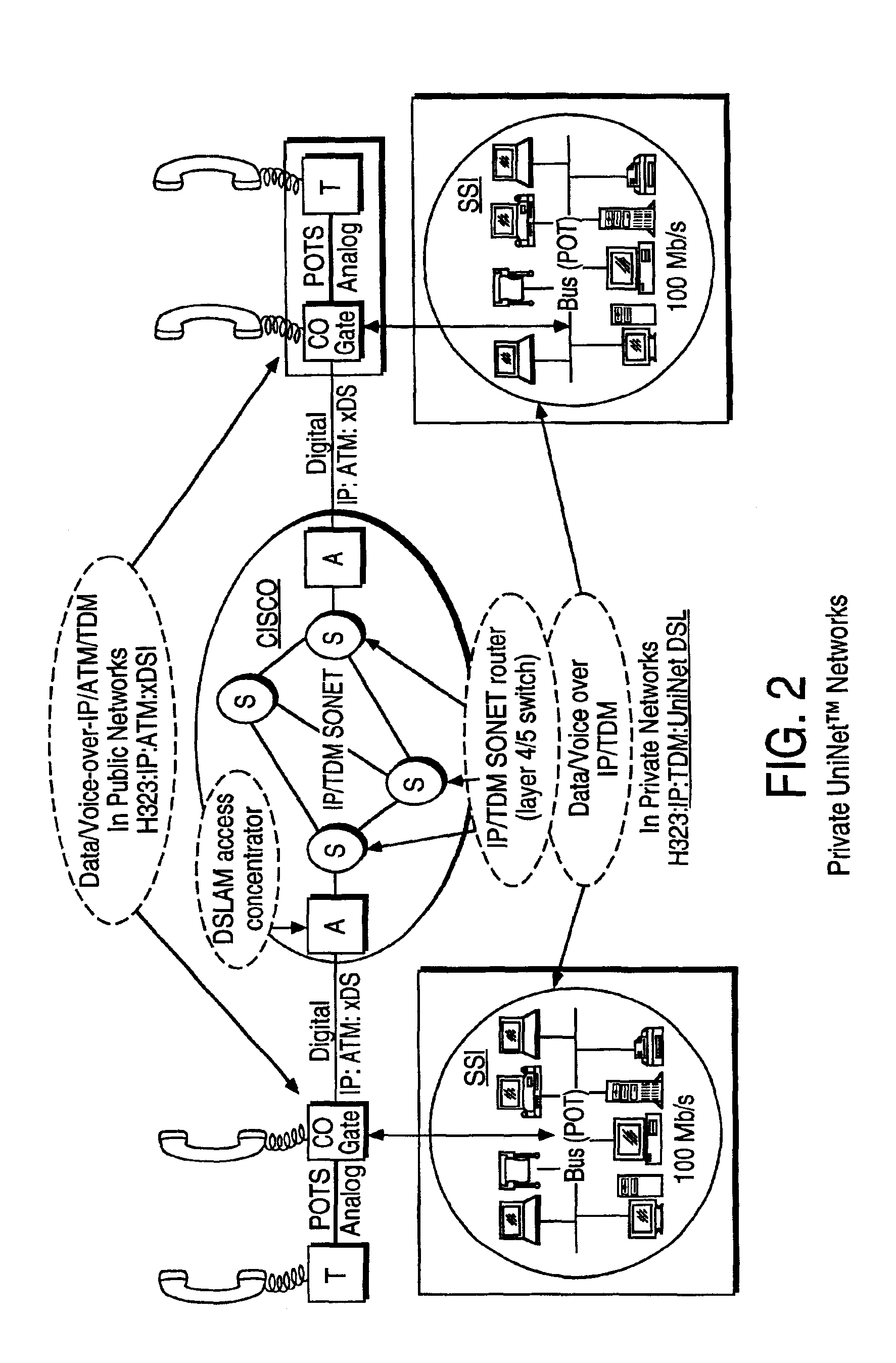Channel equalization system and method
a channel equalization and channel equalization technology, applied in the field of channel equalization system and method, can solve the problems of inflexible data service, difficulty in interoperability and integration of these technologies, and inflexible circuit-switched networks, and achieve the effect of fast connection establishmen
- Summary
- Abstract
- Description
- Claims
- Application Information
AI Technical Summary
Benefits of technology
Problems solved by technology
Method used
Image
Examples
case 1
gnal
[1653]Suppose that the measured channel plus background noise for the i-th trial is:
C(i)=H+N(i)
where C(i)=[c1(i), c2(i), . . . , cL(i)]T, H=[h1, h2, . . . , hL]T is the sampled (in symbol rate) vector of the channel impulse response, and [.]T denotes the transpose of [.]. Here, we assume perfect time synchronization so that H appears the same regardless of the trial index i. N(i)=[n1(i),n2(i), . . . , nL(i)]T is the noise vector.
[1654]Assuming that the numbers of taps in THP and FFE are NTHP and NFFE, respectively, we construct two NFFE×(L+NFFE−1) matrices, Φc(i) and ΦH, as: ΦC(i)=[c1(i),c2(i),…,cL(i),0,0,… ,00,c1(i),c2(i),… ,cL(i),0,… ,0⋯⋯⋯⋯⋯⋯⋯⋯0,0,… ,0,c1(i),c2(i),… ,cL(i)]ΦH=[h1,h2,… ,hL,0,0,… ,00,h1,h2,… ,hL,0,… ,0⋯⋯⋯⋯⋯⋯⋯⋯0,0,… ,0,h1,h2,… ,hL]
[1655]To evaluate the optimum weight coefficients, the correlation matrix of the received samples in the conventional FFE and the correlation vector of the desired symbol with the received samples are required. They...
case 2
gnal
[1659]The following calculation follows a note “Notes on Calculation of QAM DFE” (J. F. Weng, July 1999) which is a little bit different from that used in “DSL Simulation Techniques and Standards Development for Digital Subscriber Line Systems” (W. Y. Chen, 1998) for calculating the optimum weight coefficients in QAM. (Comparison will be done later to see the difference and the effect on performance)
[1660]The calculation can be shown similar to that for PAM signal discussed above while bearing in mind that the signals discussed below for QAM signals are all complex-valued signals.
[1661]Suppose that the measured channel plus background noise for the i-th trial is:
C(i)=H+N(i)
where C(i)=[c1(i), c2(i), . . . , cL(i)]T, H=[h1, h2, . . . , hL]T is the sampled (in symbol rate) vector of the channel impulse response, and [.]T denotes the transpose of [.]. Here, we assume perfect time synchronization so that H appears the same regardless of t. N(i)=[n1(i), n2(i), . . . , nL(i)]T is the n...
PUM
 Login to View More
Login to View More Abstract
Description
Claims
Application Information
 Login to View More
Login to View More - R&D
- Intellectual Property
- Life Sciences
- Materials
- Tech Scout
- Unparalleled Data Quality
- Higher Quality Content
- 60% Fewer Hallucinations
Browse by: Latest US Patents, China's latest patents, Technical Efficacy Thesaurus, Application Domain, Technology Topic, Popular Technical Reports.
© 2025 PatSnap. All rights reserved.Legal|Privacy policy|Modern Slavery Act Transparency Statement|Sitemap|About US| Contact US: help@patsnap.com



